Guyana Flag Meaning
A green field with a yellow arrowhead bordered in white pointing toward the fly, and a red triangle bordered in black at the hoist, known as 'The Golden Arrowhead,' representing the country's natural resources, diversity, and forward progress.
- Continent
- South America
- Adopted
- 1966
- Ratio
- 3:5
- Colors
- green, yellow, white, black, red
- Designer
- Whitney Smith

Symbolism
Green Field: Represents the vast forests and agricultural land of Guyana, symbolizing the country's rich natural heritage, environmental wealth, and the lush rainforests that cover over 85% of the nation's territory.
Golden Arrowhead: Represents Guyana's mineral wealth, particularly gold deposits, and the country's bright future, symbolizing progress, optimism, and the forward-looking spirit of the Guyanese people as they build their nation.
White Border: Represents the rivers and waterways that are vital to Guyana's geography and economy, symbolizing purity, peace, and the life-giving waters that sustain the country's agriculture and transportation.
Red Triangle: Represents the energy, zeal, and dynamic nature of the Guyanese people in building their nation, symbolizing the passion and determination required for national development and the sacrifices made for independence.
Black Border: Represents the endurance and strength of the Guyanese people, symbolizing perseverance through challenges and the resilience needed to overcome the difficulties of nation-building in a developing country.
History
- Pre-1499: Indigenous peoples including the Arawak, Carib, and Warao inhabited the region for thousands of years, developing sophisticated societies adapted to the tropical environment and river systems.
- 1499-1831: European colonization began with Spanish exploration, followed by Dutch settlement and the establishment of plantation colonies, with various European flags representing changing colonial control.
- 1831-1966: British Guiana was established as a crown colony, with the Union Jack representing British colonial authority over a diverse population including indigenous peoples, enslaved Africans, indentured Indians, and other immigrants.
- 1950s-1960s: The independence movement gained momentum under leaders like Cheddi Jagan and Forbes Burnham, with growing demands for self-government and the development of national symbols.
- May 26, 1966: Guyana gained independence from Britain, adopting 'The Golden Arrowhead' flag designed by Whitney Smith, becoming the Cooperative Republic of Guyana and the first English-speaking South American nation.
- February 23, 1970: Guyana became a republic, maintaining the same flag while establishing a new constitution and strengthening its identity as an independent nation in South America.
- 1966-Present: The flag has represented Guyana through political challenges, economic development based on natural resources, and its unique position as the only English-speaking country in South America.
Trivia
- Guyana's flag is nicknamed 'The Golden Arrowhead' and is considered one of the most distinctive and beautiful flag designs in the world.
- The flag represents the only English-speaking country in South America, making Guyana unique among its Spanish and Portuguese-speaking neighbors.
- Guyana is home to Kaieteur Falls, one of the world's most powerful waterfalls, which is five times higher than Niagara Falls.
- The flag flies over a country that is about 85% covered by pristine Amazon rainforest, making it one of the most forested countries in the world.
- Guyana has one of the world's most diverse populations, with people of African, Indian, Indigenous, Chinese, Portuguese, and mixed heritage living together.
- The flag represents a country that was the setting for the tragic Jonestown massacre in 1978, where over 900 members of the Peoples Temple died.
- Georgetown, the capital, lies below sea level and is protected by a sea wall and drainage system originally built by the Dutch.
- Guyana is one of the world's largest producers of bauxite (aluminum ore) and has significant gold and diamond deposits represented by the golden arrowhead.
- The flag flies over a country with no major mountains, consisting mainly of coastal plains, highlands, and vast interior forests and savannas.
- Cricket is the national sport, and Guyana has produced many world-class cricketers who have played for the West Indies team.
- The flag represents a country where rice and sugar are major agricultural exports, continuing traditions established during the colonial plantation era.
- Guyana has significant oil discoveries offshore, which began production in 2019 and are expected to transform the country's economy dramatically.
- The Essequibo region, claimed by Venezuela, makes up about two-thirds of Guyana's territory, creating an ongoing territorial dispute.
- Guyana's population is one of the most emigrant in the world, with more Guyanese living abroad than in the country itself.
- The flag represents a country that is a member of both CARICOM (Caribbean Community) and UNASUR (Union of South American Nations), bridging Caribbean and South American regional organizations.
Related Countries
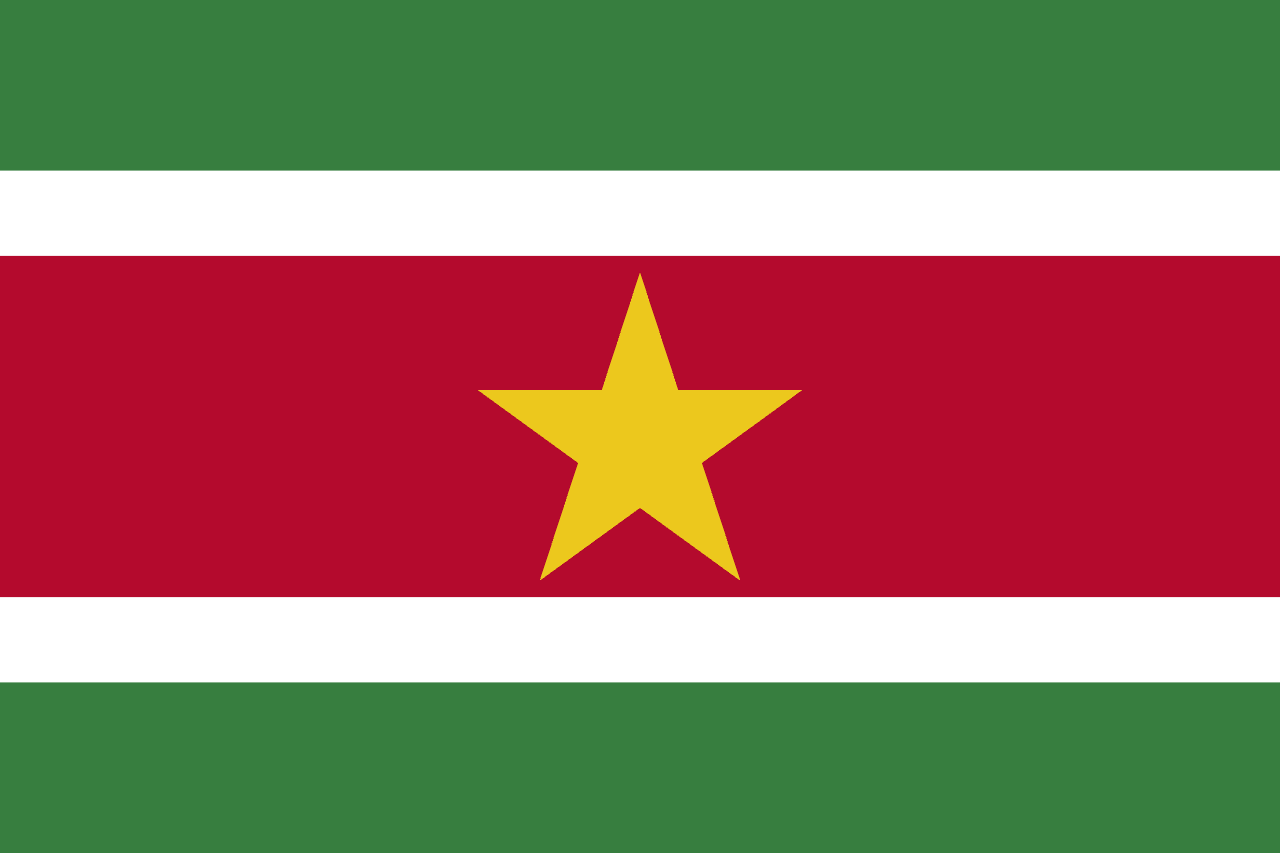
Suriname
South America
Five horizontal stripes of green, white, red, white, and green with a yellow five-pointed star in the center of the red stripe, representing the country's forests and agriculture, peace and justice, unity and progress of the people, hope and golden future, designed for independence in 1975.
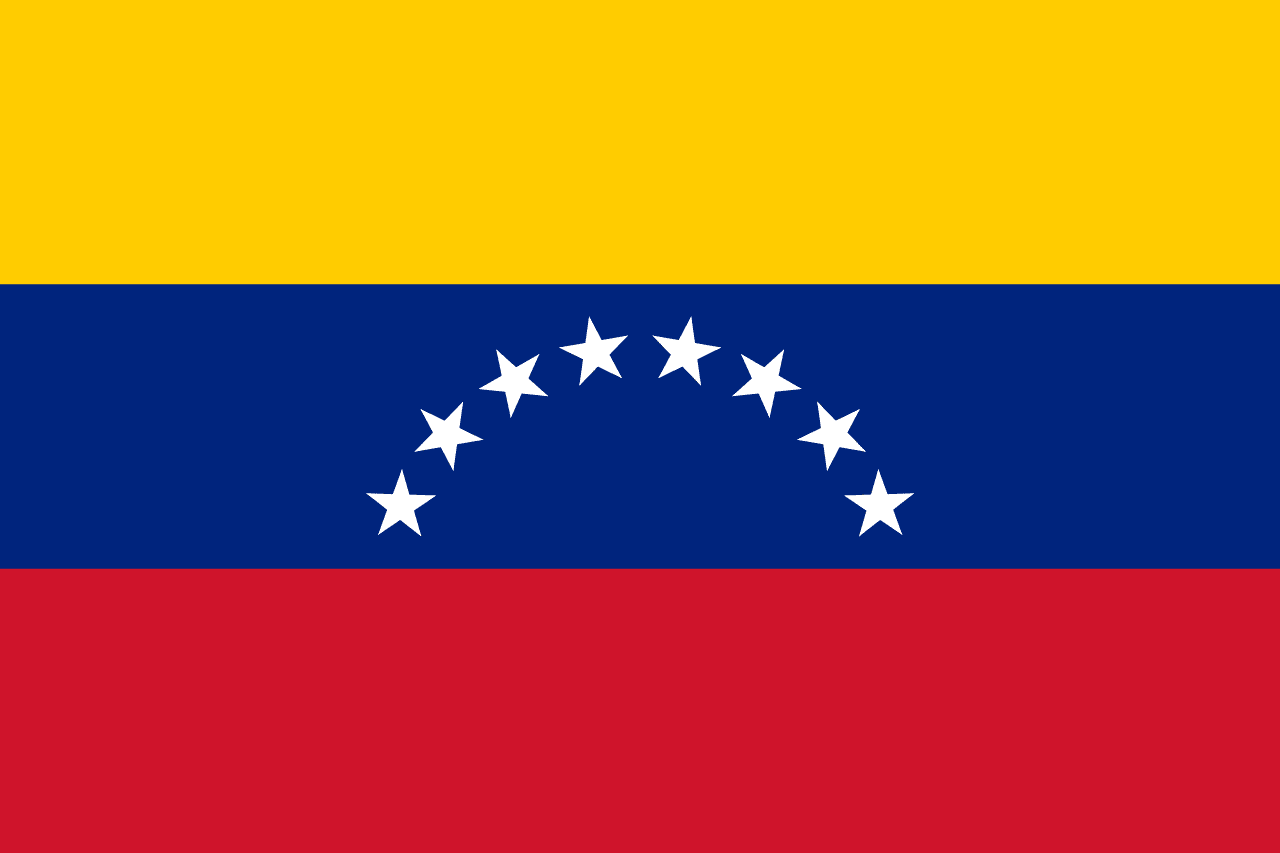
Venezuela
South America
Three horizontal stripes of yellow, blue, and red with eight white stars in an arc on the blue stripe and the coat of arms on the upper hoist corner, representing the wealth of the land, the seas separating Venezuela from Spain, the blood shed for independence, and the eight original provinces that declared independence.
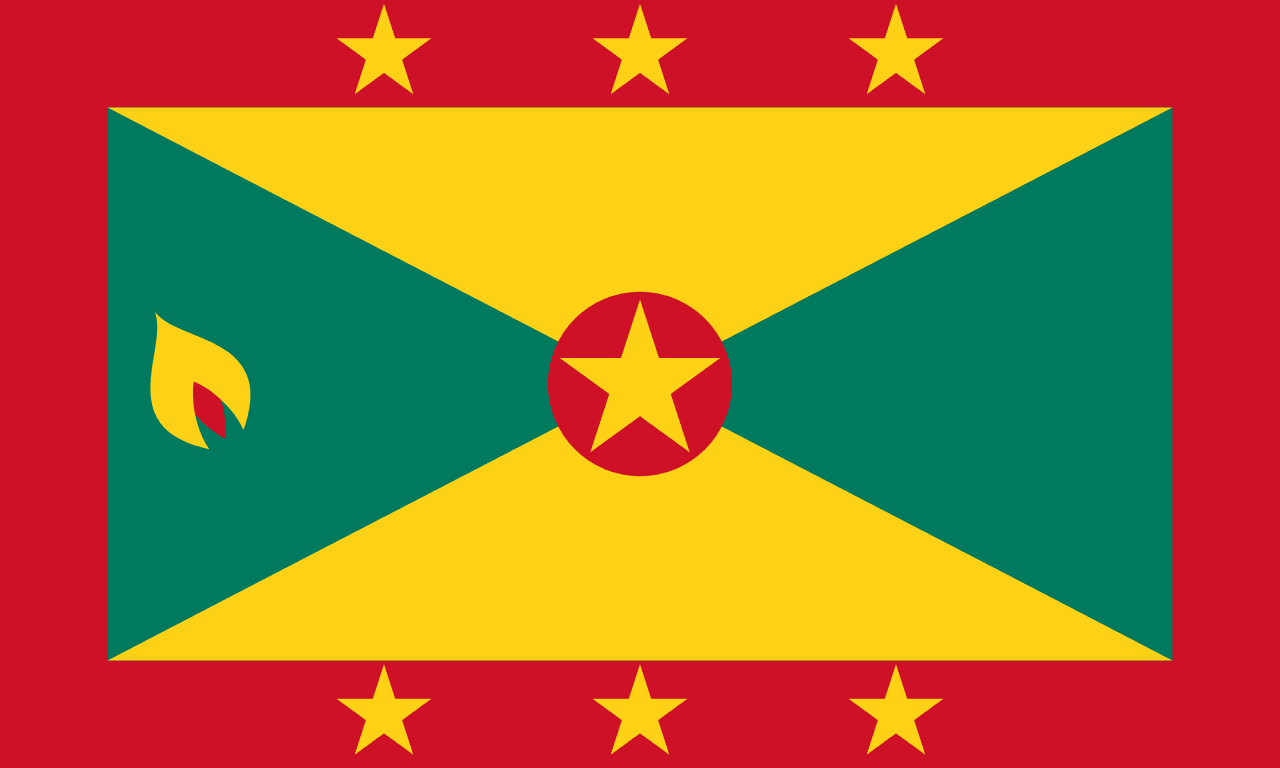
Grenada
North America
A red border surrounding yellow and green triangular sections with seven gold stars and a nutmeg symbol, representing the warmth of the people, sunshine and agriculture, vegetation and youth, and Grenada's fame as the 'Spice Island.'
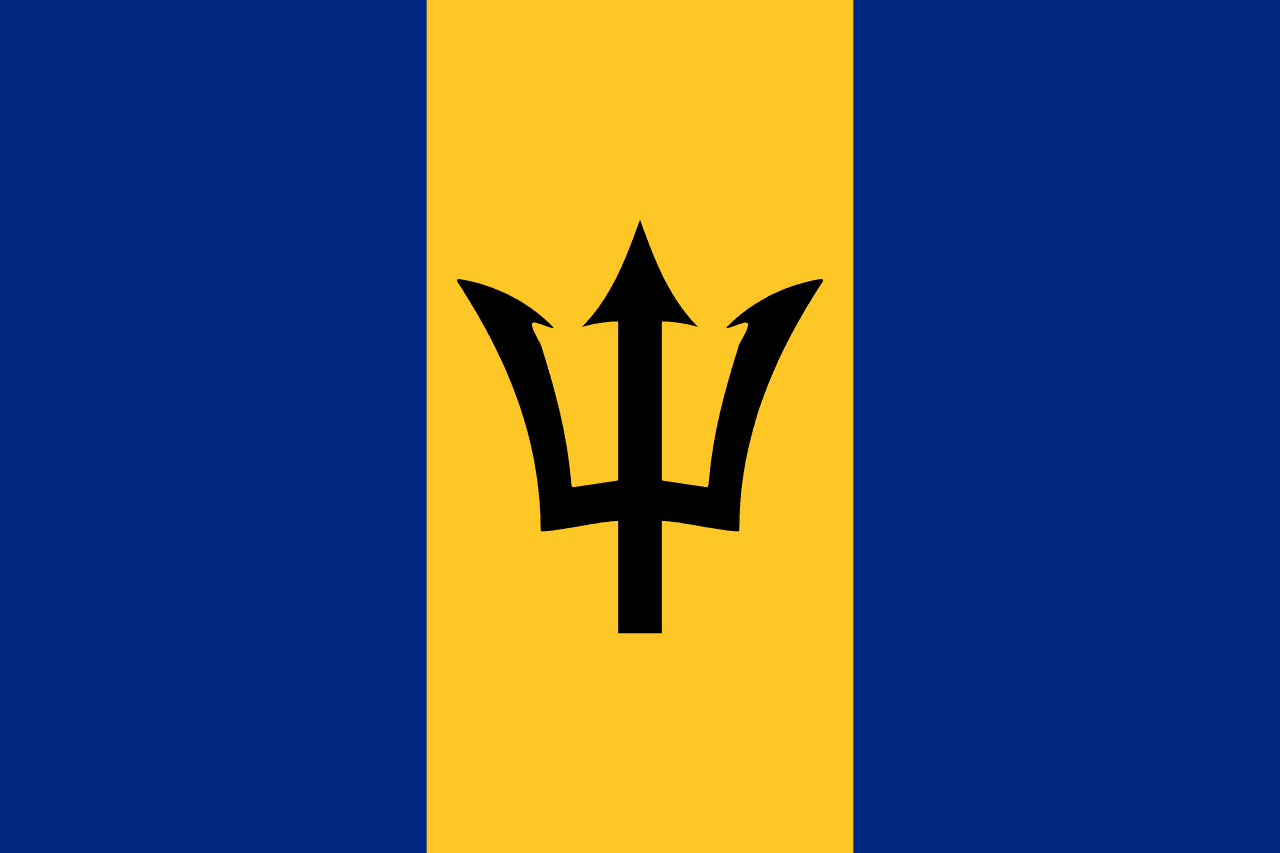
Barbados
North America
Three vertical stripes of ultramarine blue, gold, and ultramarine blue with a black trident head (broken from its staff) in the center golden stripe, representing the sea surrounding the island, the golden sands of its beaches, and the break from colonial dependence on Neptune's trident symbol.
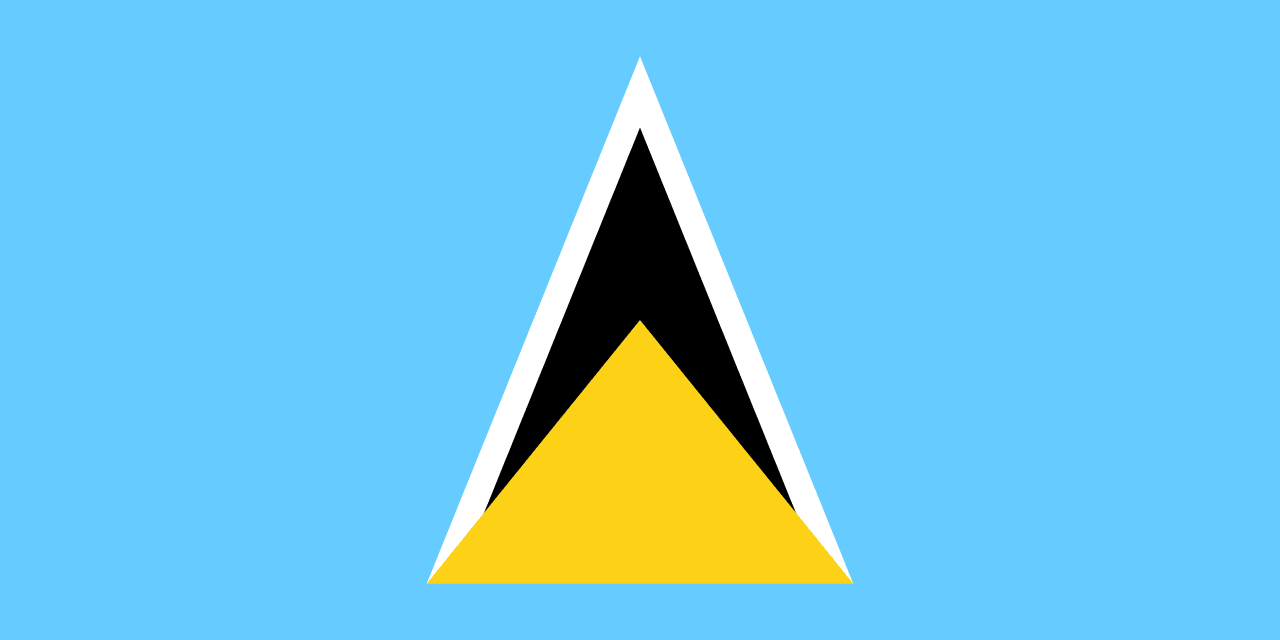
Saint Lucia
North America
A cerulean blue field with a gold isosceles triangle in front of a white-edged black triangle. The design reflects the island’s natural features and cultural heritage.
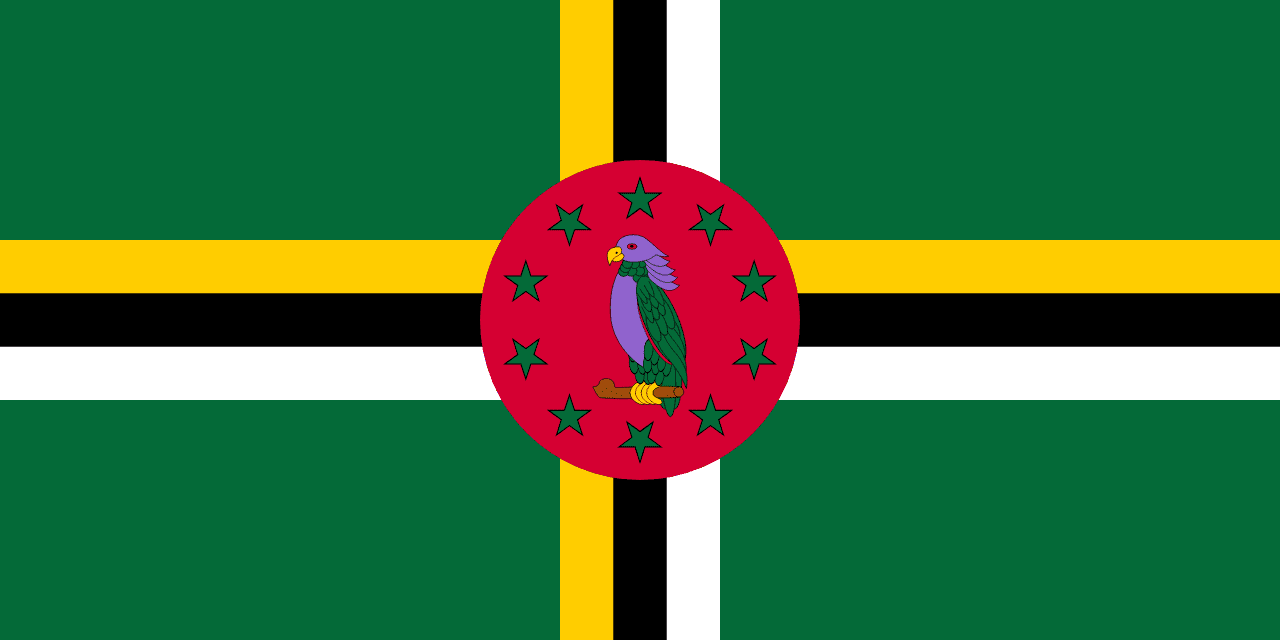
Dominica
North America
A green field with a cross pattern of yellow, black, and white stripes and a red circle in the center containing the Sisserou parrot, representing the lush vegetation, the Trinity, racial harmony, and the unique wildlife of the 'Nature Island of the Caribbean.'